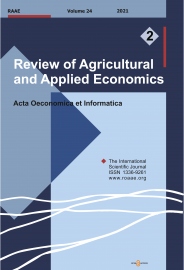KEYWORDS:
pork cycle, cobweb theorem, cycle synchronisation, Hodrick-Prescott filter
DOI NUMBER:
10.15414/raae.2012.15.01.18-23
ABSTRACT:
The development of pork prices has been analysed since the 1920s. Well known economic concepts such as Hanaus pork cycle or Ezekiels cobweb theorem are based on the empirical analysis of pork markets. We analyze whether pork price developments in different countries have become more synchronised over time. In a first stage of our analysis, annual pork price data collected by the FAO reveals much heterogeneity of pork price developments across countries. However, for some groups of countries the observed price patterns are very similar or even identical. This is especially the case for neighbouring countries with integrated pork markets, such as the members of the European Union (EU). We then compare pork price developments in Germany and the USA based on 36 years of monthly producer prices for slaughter pigs. Since the middle of the 1990s cyclical pork price movements in the USA and Germany have become increasingly synchronous. We attribute this to two developments: the fact that the USA has become a large net exporter of pork over this period, and policy reform in the EU that has strengthened the link between international and EU feed prices.
Please Cite this Article as:
HOLST, Carsten - VON CRAMON-TAUBADEL, Stephan (2012) International Synchronisation Of The Pork Cycle. Review of Agricultural and Applied Economics. XV (Number 1, 2012): 18-23. doi: 10.15414/raae.2012.15.01.18-23
URL for sharing:
https://roaae.org/1336-9261/doi/abs/10.15414/raae.2012.15.01.18-23
FULL TEXT PDF:
▼ direct download link| view online in fullscreen ▲

